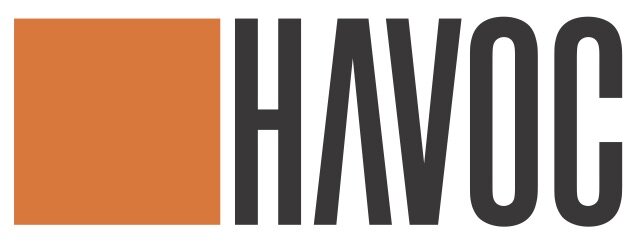Slinks
Titans are titanic, giants, all-powerful, a family of gods from Greek mythology. Titan is also the name given to Saturn's largest moon, and the rockets used by NASA from 1959 to 2005. This is the metal on planet Earth with the most appropriate name. Titanium has the superpower of having the highest strength-to-weight ratio of all metals. The SR-71 Blackbird is a US military plane with an airframe and skin of this metal that flew at a sustained altitude of 85,069 feet and at speeds over 2,100 mph. At three times the speed of sound, the heat generated caused the plane to expand in length ten inches, and this is from a material prized for its thermal stability and rigidity. I strongly recommend visiting the ones on display. They are the epitome of a sculptural machine -- sleek, black darts whose only onboard weapon was thrust. They could outrun missiles. All modern military planes are pointy, with shapes that scream fast and lethal; but the Blackbird is easily the loveliest of line, more graceful than brutal, more science fiction than engineering fact, more Pininfarina, built more like a diving falcon than a gun in the sky.
Titanium is a greyish, very light, corrosion resistant, transition metal, discovered in Great Britain in 1791. These attributes combined with its thermal properties are ideal for military and aerospace applications requiring super strength and minimal weight. It is also a perfect material for making prosthetic implants and screws to hold bones in place, making hypoallergenic jewelry or eyeglass frames or bicycles or even horseshoes. (We eat .8 milligrams a day in our food, but because it's inert, it passes right through). I often wear these bracelets through the scanners at the airport. There is plenty of side-eye from the security involved, but this metal is not magnetic.
In 1997, the Guggenheim Museum Bilbao opened. It is sheathed in 42,875 panels of Titanium, each panel roughly 2' by 3' and .151 inches thick. The iconoclastic and visionary Frank Gehry, a titan of architecture, was studying potential sheathing materials in the parking lot of his Los Angeles offices. Stainless steel -- heavy, too reflective, and too gray, particularly on the rainy days common in Bilbao. Lead, toxic. Copper, too thermally unstable, heavy, reactive, structurally weak. One afternoon the test panel of Ti shone golden in the afternoon sun and the light tipped the scale. The Ti sheathing could be half the weight of stainless, but was still going to require 60 tons of a very expensive metal. Mined on every continent and ninth most abundant metal in the earth's crust, it's pricey because refining it is complicated, requiring multiple processes and artificial atmospheres to change it from mineral to metal. When construction bidding went out, Russia had just dumped stockpiles on the global market, sinking the price to a sweet spot. Material was sent to Pittsburgh in the U.S. for the technical metal fabrication of sheathing and hardware and back to the site where mountain climbers on ropes were employed to fasten the panels onto the compound curves of a climax of 20th Century design. The Guggenheim Bilbao is a 258,000 square foot sculpture of Deconstructivist architecture, a monumental art object of exquisitely curvaceous space, inside and out, AND an art museum, filled with treasure.
Fifteen years ago, I wanted to make portable sculpture, toys that could be reconfigured on a tabletop, little towers, rumpled piles, a circular fortification. Bracelets seemed like the answer. The first batch were stainless steel, brass and bronze. They sold well. We ran out. At the time I was playing with anodizing titanium, making 24" diameter bowls in pink and purple and gold and blue and green that were featured in a show at the Dartmouth museum. Titanium beckoned as a material guaranteed not to turn your arm black and be lighter AND would have all these colors available. The links are machined with a hyper precise CNC process and cut with an industrial water jet. Super tech and digital, but I have the cutter run fast causing texture and a little feathering on the surfaces. We called them Slinks. Five years ago we did a second batch and my son Schuyler, a mechanical engineer, introduced myriad finishes to the process.
And here we are. Generation 3 Slinks. We are working on some standard finishes to make them available through Etsy, but this missive is an invitation to get them in the experimental finishes stage. These are the initial batch. Pick one out. $350 each. Two for $600. Three for $900. Shipping is on us. Be sure to zoom on the photos to see the subtle differences in the finish work. Shoot us an email with your pick and we will do the rest.
Happy high summer!
The lake!! The lightning! The hot long evenings...
Peace my friends,
B Mac
P.S. I would like to cast backward five millennia. We were all members of tribes, families, clans. I like to think of these bracelets as signifiers of our lost brotherhood and sisterhood. Seeing someone wearing a Slink makes me smile every time. These are personal, finished by yours truly, your humble wizard. No two are ever identical. Hand finished things aren't. The colors on the metal are not patinas. They are caused by wavelength interference by light reflecting off a clear oxide layer and light reflecting off the surface of the metal itself. The nanoscale thickness of the oxide layer determines the color. It will not wear off; titanium oxide is one of the hardest things known. So join. These are tech and these are primitive. They will be around for thousands of years, maybe tens of thousands. Join the band. Share with only the cool humans. Wear a bit of the Blackbird.
